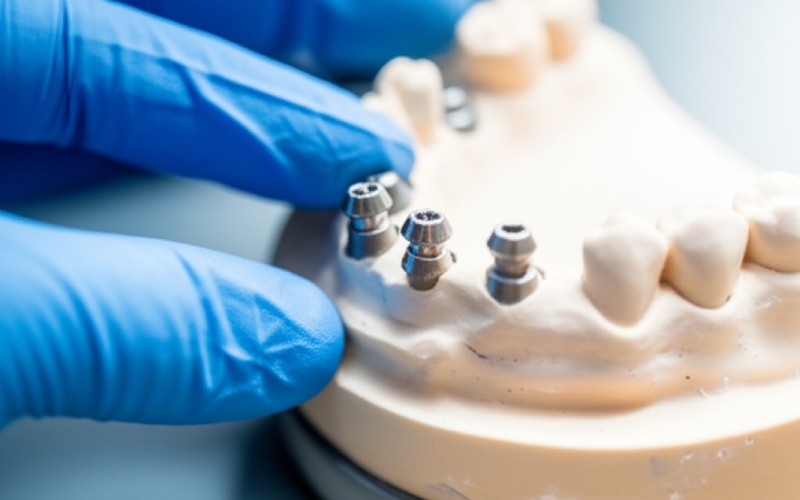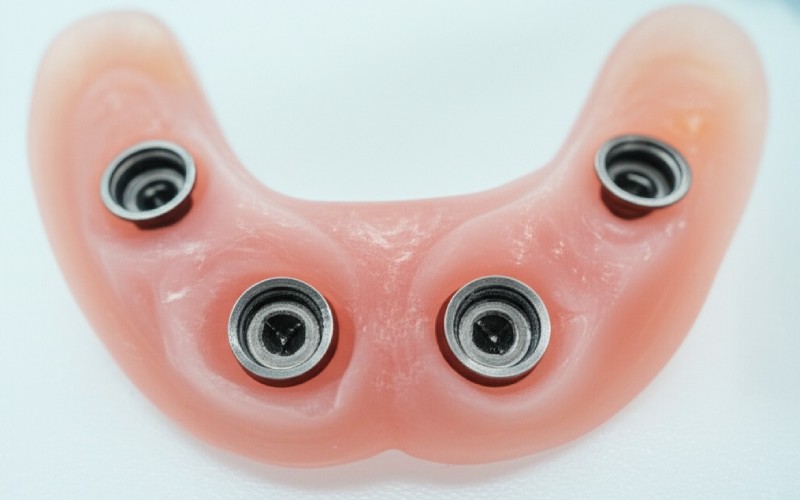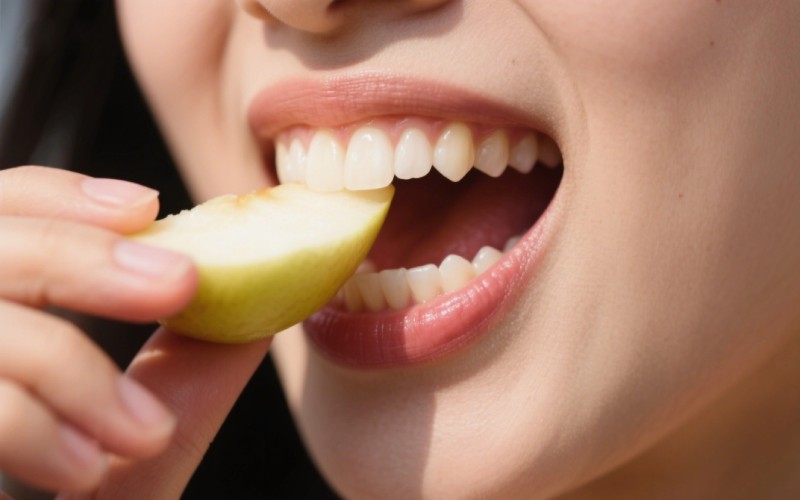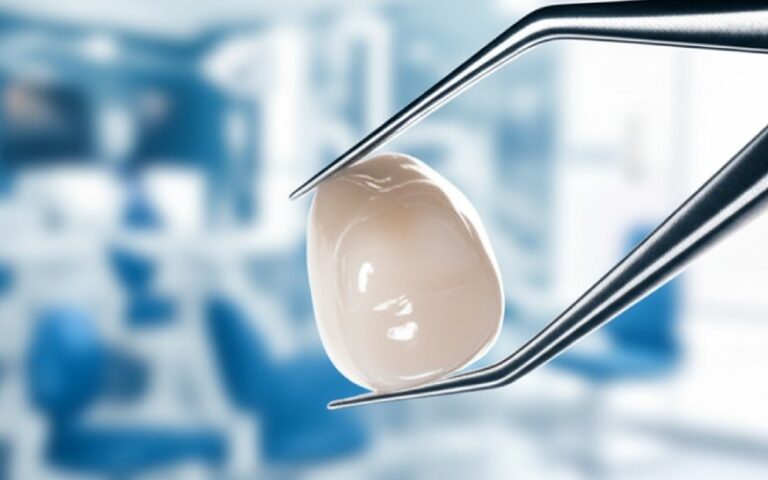
Implant Overdentures: A Simple Guide to the Clinical Steps
The implant overdenture has helped so many patients get their smiles back. It also helps them feel good about themselves again. If you are missing teeth, this article is for you. I will guide you through all the clinical steps, from your first visit to your brand new smile.
Table of Contents
What Really Is an Implant Overdenture?
I often see a patient in my office who feels sad about their missing teeth. They have trouble with a loose denture. This makes it hard for them to eat and talk. That is when I get excited to tell them about an implant overdenture. You can picture it as a special kind of denture that clicks onto dental implants. These implants are small posts made of titanium. I carefully place them into the jawbone during a surgery.
This is not like the old denture your grandma might have had, which just sits on the gum. The dental implants work like strong roots for your new teeth. The denture has special little parts on the inside. These parts connect to the implants. This makes the denture very steady. A patient can eat, laugh, and talk and not worry about their teeth moving. It is a removable prosthetic, which means you can take it out to clean it. This clinical method has made my patients so happy and pleased.
Why Are Implant Overdentures a Better Choice Than Regular Dentures?
Many patients ask me, “Why should I pick implant overdentures instead of the regular dentures my friend has?” The change is like night and day. Regular dentures just sit on top of the gum tissue. After a while, the jawbone gets smaller because it has no teeth to hold up. This is known as bone loss. This makes the denture get loose. This can cause sores and make it hard to chew your food.
Implant-supported overdentures fix this issue. The dental implants wake up the jawbone, just like real tooth roots do. This helps keep the bone strong. This means your face keeps its shape, and you can look younger. My patients who have implant overdentures can chew much better. They can eat the foods they used to love. The steadiness of the denture makes them feel sure of themselves. They do not feel shy anymore about a denture that might move. The general patient comfort and the way they work are so much better.
Could I Be a Good Fit for Dental Implants? Your First Visit
The path to a new smile begins with a very careful check-up. When a new patient comes to see me, the very first thing I do is I listen. I want to learn about their problems and what they hope for. After that, I do a complete check of their mouth. I look at the health of their gum and any teeth they still have. The most vital thing I need to check is the amount of bone they have in their jaw.
To check the bone, I use a special 3D scan. This scan gives me a very clear picture of the patient’s jawbone. It shows me the bone density, which is how strong the bone is. It also shows the shape of the bone ridge. This is very important to make sure we can place the implants and have them work well. Not every person has enough bone. If a patient has been missing teeth for many years, their bone might have become too thin. But there is no need to worry! Many times, we can do a bone graft procedure to add more bone. This first visit is all about getting the facts to make the very best treatment plan for the patient.
How Do We Map Out Your New Smile? The Plan for Your Treatment
As soon as I have all the facts from the scan and the check-up, I will sit with the patient to make a treatment plan. This plan is like a map for their overdenture process. We talk about every little detail. We talk about the number of implants they will need. For a denture on the bottom, two implants are often all that is needed. For a denture on the top, we usually need more to make it steady. We also talk about the different types of overdentures.
I take a close look at the patient’s face shape and their bite. We have to be sure the new teeth will look real and work right. We talk about the vertical dimension. This is the space between your nose and your chin. This is very important for good looks and for the teeth to work well. I will take an impression of the patient’s mouth. This impression works like a model that we use to plan everything. The patient is a team member in this process. I want to be sure they understand and are happy with each step. What they want and how they feel are the most important things to me.

What Goes On During the Surgery to Place the Implants?
The day we place the implants is a very important step. A lot of patients feel a little scared, but I tell them that the surgical part is very easy and not painful. We make very sure the patient is feeling relaxed and has no pain. The implants are put into the jawbone. I use a very exact guide from the surgery plan to make sure the placement is just right. The implants are made from titanium. This is a special metal that the body likes and accepts very well.
After the implants are in, they need some time to get strong. A thing called osseointegration happens. This is when the bone grows all around the titanium implants and joins with them. This process is what makes dental implants so very strong and steady. It can take a few months to happen. While this healing is going on, the patient might wear a denture that is not permanent. I put healing caps on top of the implants. These caps protect them and also help shape the gum tissue.
How Does the Dental Lab Make Your Special Overdenture?
While the implants are getting strong in the bone, the dental lab starts its work. The lab has a very big part in making a beautiful restoration that works well. I work very close with my technician at the lab. I send them the impression of the patient’s mouth. I also send all the information from our treatment plan. The lab will use all of this to build the patient’s new denture.
The technician at the lab is like a real artist. They place each tooth very carefully in wax. They do this to make the most perfect smile. They look very closely at the bite. They make sure the new teeth will come together in the right way. This is called the vertical dimension of occlusion. The lab will build a denture that fits just right over the implants. Making the denture is a job with many small, important steps. They build the attachment system right into the bottom of the denture. This will let the denture click right onto the implants in the patient’s mouth.
What Kinds of Overdentures Can You Get?
I always make sure to explain the different kinds of overdentures to my patient. This helps them choose what is best for what they need. The two kinds you see most often are ball-retained and bar-retained overdentures.
- Ball-Retained Overdentures: This kind uses parts called ball attachments. Each implant has a metal ball on its top. The denture has little cups that are made to click right onto these balls. This is a very steady system. It is also simple for the patient to keep clean. Ball-retained implant overdentures are a very common pick.
- Bar-Retained Overdentures: In this system, a thin bar made of metal joins the implants together. The denture has clips on it that hook onto this bar. This gives amazing steadiness. This choice is often used when a person gets more implants.
| Attachment Kind | Good For | How Steady? | Cleaning |
|---|---|---|---|
| Ball Attachments | Fewer implants, bottom jaw | Good | Easy |
| Bar-Retained | More implants, top jaw | Excellent | Needs more care |
Picking the right attachment kind depends on a few things. These things include the number of implants, the shape of the patient’s mouth, and what they like best. I help every patient figure out which choice is the right one for them.
The Big Day: What Will Happen at Your Last Appointment?
The day we give the patient their final implant overdenture is always a happy one. The patient is able to see their new smile for the very first time. At this visit, I first look at the implants. I make sure they are healed up just right. Then, I put on the abutments. These are the connector parts that will hold the denture.
After that, I will place the new denture in the mouth. I look at how it fits, how the teeth come together, and how it looks. I want to be certain that it is all perfect. The patient will look in a mirror, and how they react is always the best part of what I do. We might need to make a tiny adjustment. This is to make sure the patient comfort is just right. I will also teach the patient how to put in and take out the denture. Taking it out the right way is important so the attachments do not get hurt. We do it a few times until the patient knows how to do it with no problem.
How Should I Look After My New Implant Overdenture?
I make sure to tell every patient that looking after their implant overdenture is very important for it to last a long time. It is something we do together as a team. I give them simple instruction about how to keep their mouth and their denture clean. The denture can be taken out, which makes it easier to clean.
I tell the patient to take out the denture every night. They should clean the denture using a soft brush and a special cleaner for dentures. It is also very important to clean around the abutments that are in the mouth. I show them how to use a special kind of brush to clean the gum tissue and the soft tissues that are around the implants. Good oral cleaning stops problems. It also makes sure the implants and the tissue around them stay healthy for a long time. I want my patients to be happy with their new smile for many, many years to come.

What Should I Expect for the Future? Check-ups and Feeling Happy
My work with the patient is not over after the last visit. Having regular follow-up visits is very important. I usually like to see the patient a few days after they get their new denture. I do this to check if there are any sore areas. Then, I set up regular check-ups. During these followup appointments, I will check the denture, the attachments, and the health of the implants and gum tissue.
The attachments can get worn down after some time, like the bottom of a shoe. They might need to be changed every one or two years to keep the denture fitting tight. This is a very simple and fast adjustment to make. The patient satisfaction with implant overdentures is very, very high. They can have better oral function and a lovely smile. Not like with regular dentures, they feel safe and sure of themselves. The final outcome is a happy patient who can live a full life. To see that change in a person is why I am so happy to be a dentist.
Important Things to Keep in Mind:
- An implant overdenture is a special denture that clicks onto dental implants so it fits tight.
- They are much steadier than regular dentures and help keep your jawbone healthy.
- The whole process begins with a good check-up and a 3D scan to see how much bone you have.
- The lab has a very big part in making a special denture for you that looks real.
- There are different kinds of attachments, like balls or bars, that hold the denture in place.
- Cleaning your denture and around your implants well every day is a must for them to last a long time.
- Regular check-up visits with your dentist are needed to make sure everything stays healthy and works right.




